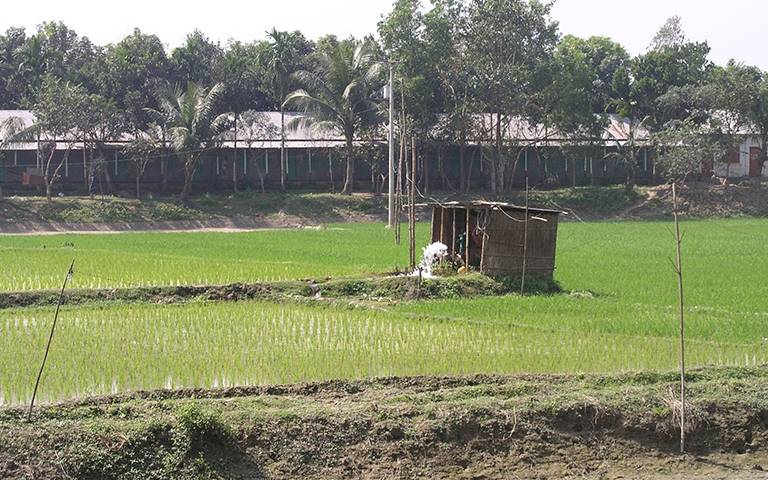UCL Research on Science and Nature covers
21 September 2022
Last weekend, research by academics from the Department appeared on the front covers of both Science and Nature.

Professor Richard Taylor and Dr Mohammad Shamsudduha, Associate Professor in Humanitarian Science at the UCL Institute for Risk and Disaster Reduction, presented their work in Science quantifying the ‘capture’ of seasonal rainfall sustaining irrigated agriculture in the Bengal Basin of Bangladesh.
Bengal Water Machine
Known as the Bengal Water Machine, they show that pumping of groundwater for irrigation by millions of smallholder farmers during the dry season lowers groundwater levels that then enhance leakage under the gravity of floodwaters from rivers, ponds and canals during the subsequent monsoon.
Former UCL Geography PhD student and Post-Doctoral Fellow Dr Shamsudduha says that “this intervention seeks to increase the capture and storage of seasonal freshwater surpluses while mitigating the monsoonal flood risk.”
Professor Richard Taylor points out, “this scalable, decentralised form of freshwater capture has sustained irrigated food production despite substantial variations in annual rainfall and an overall decline in basin rainfall since the 1990s.
"As such, our analysis has profound implications for the expansion and optimisation of this vital, under-recognised engineering marvel that sustains irrigated food production within alluvial plains of the seasonally humid tropics.
"In a warming world, the demonstrated resilience of this conjunctive use of surface water and groundwater to hydrological extremes amplified by climate change is of strategic importance to global food security.”
Sea ice mapping
Meanwhile, Dr Harry Heorton and colleagues from the Department of Earth Sciences contributed their new sea ice map to the cover story in Nature.
Previous studies of Arctic sea ice thickness were limited to the winter months due to the complexities of summer melt.
The team's new research used novel machine learning methods and extensive validation to reveal the changing sea ice thickness during melt seasons as well.
The research has significant implications for shipping as well as future weather and climate forecasts.
Dr Harry Heorton said, "It's been a joy to work alongside the lead authors on this project, delivering another piece of high-quality research.
"That this paper has been selected to feature on the front cover of Nature is a testament to the hard work of Jack Landy (UiT The Arctic University of Norway, Tromsø) and his realisation of the wider public appeal and impact of this revolutionary data set."
 Close
Close

